| Umělec magazine 2008/1 >> Back to the Future, Future to the Back | List of all editions. | ||||||||||||
|
|||||||||||||
Back to the Future, Future to the BackUmělec magazine 2008/101.01.2008 Cristian Neagoe | review | en cs de es |
|||||||||||||
|
Picture this. There’s a guy walking around in the gallery, snubbing everyone, looking at the walls as if they were painted with shit. He is not looking at the works, just at the empty spaces between them. The works get the snub too. He’s wearing this black t-shirt and it says “M-am plictisit” on it. That’s “I’m bored” in Romanian. Phosphorescent green, with a clear designish touch, as the letters are made to collate in a subtle artsy-fartsy way that catches the eye of the connoisseur.
Ok, now that you picture it, consider that I’m picturing it at the same time, while I’m writing about an exhibition I’ve never seen. “Is that, like, ethical?” If art is what you can get away with, so is art reviewing. Thank you. Keep that in mind for just a little while and don’t get bored yet, as we’ll quickly immerse into some recent history. In communist Romania, the secret police was called “Securitate.” Yeah, guess what: that’s “Security” in Romanian. This provider of trust and safety employed 11,000 agents and around half a million people during the reign of Nicolae Ceauşescu. Children were taught in schools to denounce their parents if they heard them speaking against the regime. Some of them did accordingly. People were imprisoned and put to dig a useless canal between the Danube and the Black Sea. 64 km long. After that was over, they were put to dig another canal, this time between Bucharest and the Danube. So that Bucharest will be directly linked to the Black Sea. Another 73 km. Unfinished, useless. Of course, everybody suffers, we shouldn’t make such a big fuss about it. People are still dying all over the world because of political repression. Even so, our personal suffering is always greater than someone else’s. We don’t have access to other people’s feelings. We can only try to compare them to our own in similar situations. It’s a pretty bad comparison, but it’s as close as we can get. We went through this big historical accident that lasted for half a century and now we’re recovering. Some people just want to forget, while others want to squeeze the whole truth even if it hurts. The secret services filed reports about all the potential “enemies of the people,” about every “unhealthy element” that could rot inside the “New Society.” There are around four million files. That’s a freaking huge archive for a nation of 22 million. It would seem only logical that the people who collaborated with the Securitate would want their files gone. But they receive unexpected support from the younger generations. Tired and bored by all the political scandals around something they haven’t lived through, they respond with indifference and, when prompted to react, they say “burn the motherfuckers and let’s get it over with.” Now, that you have the context, let’s go back to the exhibition at the Galeria Nouă in Bucharest, which was open for only three days in November 2007. Everything from its title to the guy with the t-shirt (who was actually part of the show, a member of the Sonokolor duo) relates to this context. “Back to the Future,” that’s how Vlad Nancă, the curator of the exhibition, named it. And he chose that title for several reasons. First, there’s the straight-in-the-face meaning—let’s make another little trip to our history of suffering and our lack of balls. We go back and dig well and that’s how we get to meet the future, by recuperating our past. There’s no way you can have a future, one might say, without being familiar with your past. That works for individuals as well as it does for nations. In this interpretation, “Back to the Future” functions the same way a sling does. Then, you have the literal translation of the English title, which in Romanian sounds like “Cu spatele la viitor,” meaning “Turning Your Back to the Future.” That’s actually the subtitle of the exhibition, giving another hint to what we’ll see here. (Of course, I didn’t see it and you won’t see it, so we’re cool with that, right?) Dealing with the future posterior-side-first would be yet another common attitude in contemporary Romania: “Who gives a fuck about what will happen if we erase our past? Things have their own course and there’s nothing we can do about it.” That’s the traditional fatalistic view, which may actually be closer to the real state of things than we’d be willing to admit. Finally, there’s this reference to a crazy science-fiction comedy of the ‘80s, which was extremely popular in a Romania eager to consume as much American crap as possible. I’ve recently seen it again (fourth time) and I truly believe there is no line in that script written without heavy pot smoking in advance. The plot is dealing with some guys who time-travel to the past and mess it up, so they have to repair everything and go back to the initial future, without having the technological means to do it. Tudor Prisăcariu’s project, Entropy.ro (as judgmental as you can get with this name, if you ask me) is a photographic journey all over Romania meant to document real change and avoid the touristic clichés that compose a cheesy image of the country. Prisăcariu is picturing the ubiquitous construction of hypermarkets and the preservation of rural habits in the middle of the city, among other “simply surprising” and “fabulospirited” stuff (those are the not very inspired catch phrases employed by the government to promote tourism in Romania). Looking back to the communist times, the first thing that comes to the mind of Romanians are the queues. The infamous queues were so poignant that they became a symbol of distress. You were allowed to buy a certain amount of eggs, but you could never know if there will be enough left for you. So you went to the “Alimentara” hours before it opened and you found that people were already there. The constant fear of not having anything to put on the table is replaced by Vlad Nancă’s black and white photos with a different kind of angst, a disturbing one as much as it’s hilarious. Nancă shoots himself going in and out (without waiting in any line) of the Angst supermarket, a chain of 19 stores in Romania known for its appealing smell of offal. Ironically, that was the most attractive of all smells just 18 years ago. Anca Benera finds statues and their constant transformation to be the most significant incarnation of the way we relate to power. Otherwise, why would furious mobs be so determined to destroy them, to get them down of the pedestal and punish them for what they represent? Unfortunately, public monuments are not very easy to destroy, so the angry mob spits and moves forward to, I don’t know, maybe burn a library or carry on with some decent looting. Some statues stay for decades in the backyard of a palace, as it is the case with the statue of Lenin, who takes a deep breath in Benera’s video and remembers everything through violent flashes, while others receive more practical modes d’emploi. The small scale equestrian Lenin that Benera sculpted started from “a feeling of ambiguity generated by a symbolic transfer—that of using the melted equestrian statue of Carol I to build the one of Lenin and around the currently argued hypothesis of remaking the Carol I’s statue, using actually the same bronze of the existing statue of Lenin,” says the artist. Statues go through intense morphological and identity transformations, but what happens with stars once they disappear? Of course, they go live a secret life on an unknown island. They continue their luxurious lives in our imagination, as we, millions of ordinary people who intimately relate to their constructed images, cannot accept their simple disappearance. You are not allowed to just die once you become an idol, Dragoş Platon seems to imply, as he paints their naked bodies in a kiddy’s style, chilling around with a cocktail or a fire arm, nazi-saluting from the trampoline or annoying everybody with the same old songs. Hitler, Mao, Elvis, Ceauşescu, Lady Di, Saddam, Bruce Lee, they are all having fun and getting bored in their own way on that not so happy exotic retreat. In the mean time, Mircea Nicolae is putting false “Historical Monument” signs on communist project buildings. Who knows what’s more exotic—the island or the block of flats? Daniel Gontz and Cezar Lăzărescu are also dealing with the heavy presence of the block of flats. But while Gontz is playing with it as the balconies would be interchangeable pieces of an enormous concrete puzzle, Lăzărescu creates a photographic collage offering the emergency exit—“in case of fire, break glass.” And for many, he believes, Romania is hot as hell. Given the multiple interpretations of the exhibition’s title, then looking at the works and the way they relate to each other, you take a deep breath and thank the skies this is not the kind of show that strives to make a point. It could go both ways (towards the future or against it) as well as it may be just a big farce. As Dr. Emmett Brown puts it in the "Back to the Future" movie: “Where we’re going, we don’t need roads.”
01.01.2008
Recommended articles
|
|||||||||||||
|
04.02.2020 10:17
Letošní 50. ročník Art Basel přilákal celkem 93 000 návštěvníků a sběratelů z 80 zemí světa. 290 prémiových galerií představilo umělecká díla od počátku 20. století až po současnost. Hlavní sektor přehlídky, tradičně v prvním patře výstavního prostoru, představil 232 předních galerií z celého světa nabízející umění nejvyšší kvality. Veletrh ukázal vzestupný trend prodeje prostřednictvím galerií jak soukromým sbírkám, tak i institucím. Kromě hlavního veletrhu stály za návštěvu i ty přidružené: Volta, Liste a Photo Basel, k tomu doprovodné programy a výstavy v místních institucích, které kvalitou daleko přesahují hranice města tj. Kunsthalle Basel, Kunstmuseum, Tinguely muzeum nebo Fondation Beyeler.
|







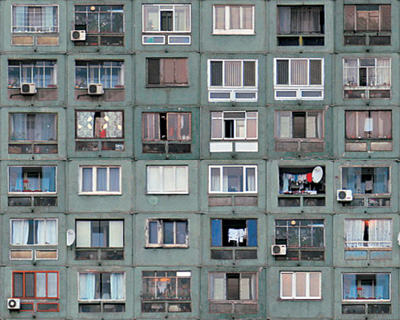


















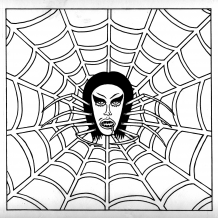




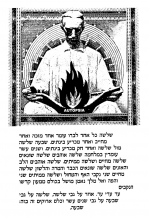
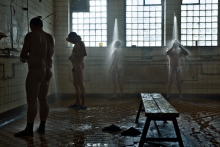

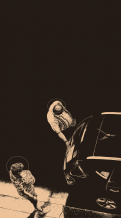


 New book by I.M.Jirous in English at our online bookshop.
New book by I.M.Jirous in English at our online bookshop.
Comments
There are currently no comments.Add new comment